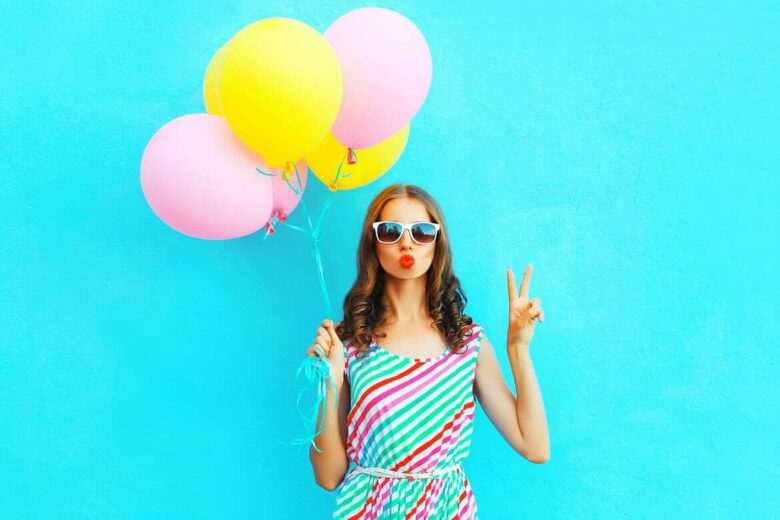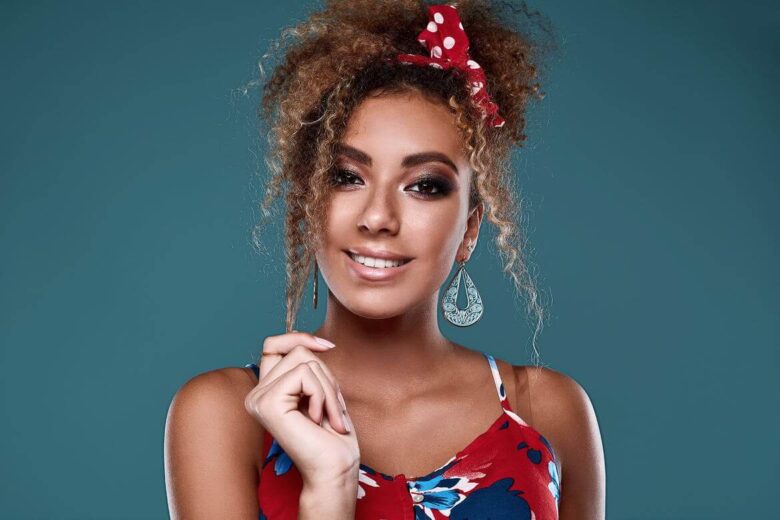The Art of Color: Color Wheel & Color Relationships
Color theory is the art of combining colors based on the color wheel, an organized illustration of the primary, secondary, and tertiary colors. Accurately combining colors, using the color wheel, and understanding how colors relate to each other are critical skills for artists, designers, marketers, and brand owners.
Primary Colors
Primary colors include yellow, blue, and red. These are colors that can’t be created by mixing other colors. Instead, they combine to create secondary colors, which in turn combine to create tertiary colors. In effect, all colors stem from the three primaries.
Secondary Colors
Secondary colors include orange, purple, and green, and they’re derived from mixing equal amounts of two primary colors at a time. Red and yellow combine to make orange; blue and yellow yield green; and red and blue create purple. Keep in mind that the ratio of each color you use when mixing them affects the final hue. For example, combining 1 part red with 1 part blue will create one shade of purple, while combining 1 part red with 2 parts blue will create a darker, more blue-tinged hue of purple.
- Simplifying Mixing Colors for Artists
- Create Secondary Colors From Multicolored LEDs
- How to Mix Bright and Dull Secondary Colors
Tertiary Colors
Tertiary colors, also known as intermediate colors, are made by combining equal parts of pri必利勁
mary and secondary colors. Sometimes they’re named after the two colors that created them, such as blue-green or orange-red, and sometimes they’re called by their own name. There are six in total: vermilion (red-orange), magenta (red-purple), violet (blue-purple), teal (blue-green), chartreuse (yellow-green) and amber (yellow-orange).
- How to Mix Color: Mixing With Tertiary Colors
- The Great Tertiary Color Debate
- Oil Painting Techniques: Why We Need Color Theory
Complementary Colors
Complementary colors are hues that contrast with each other and are positioned exactly opposite one another on the color wheel. The color wheel is an arrangement of all colors on the spectrum based on their relationships, and it’s useful in creating harmonious color schemes. Complementary colors enhance each other’s intensity when placed right next to each other, which is why they’re often used to create bold, high-contrast images that pop.
- Let’s Make Mud: Understanding and Mixing Complementary Colors
- Complementary Colors
- Complementary Colors, Afterimages, Retinal Fatigue, Color Mixing, and Contrast Sensitivity
Analogous Colors
Analogous colors are adjacent to or near each other on the color wheel. Together, they look aesthetically pleasing and produce a calming effect, as opposed to the intensity of complementary colors. Typically, one color in a scheme of analogous colors is the dominant hue, a second color supports it, and a third color acts as an accent. Analogous schemes are often used in artworks that depict nature or calming scenes.
- Analogous Color Schemes: What They Are and How to Use Them
- Understanding Analogous Colors
- What Is an Analogous Color Scheme? Your Design Secret Weapon
The Color Wheel
The color wheel, sometimes called a color circle, is a circular arrangement of colors organized by their chromatic relationship to one another. The primary colors are equidistant from each other on the wheel, and secondary and tertiary colors sit between them. It’s used in art and design to choose colors and color schemes based on their relationships to one another.
- Learn the Basics of Color Theory to Know What Looks Good
- Using the Color Wheel: Color Theory Tips for Artists and Painters
Color Relationships
The color wheel is the most common depiction of the basics of color theory. However, there are other ways to portray color relationships. Some alternative representations of color relationships include the painters’ color triangle, the printers’ color triangle, and the nine-part harmonic triangle of Goethe.
Painters’ Color Triangle
The painters’ color triangle is an arrangement of colors in a triangle shape, with one primary color at each corner and their secondary and tertiary colors in between. In contrast to the color wheel, the painters’ color triangle puts more emphasis on the primary colors and makes it easier to see the combinations between them due to its three-sided shape.
Printers’ Color Triangle
The printing process uses different core colors instead of the red, yellow, and blue used in painting. In printing, the primary colors are magenta, cyan, and yellow. The printers’ color triangle is modeled after the painters’ color triangle, but the three corners are occupied by the printing primary colors instead.
Nine-Part Harmonic Triangle of Goethe
Goethe’s color triangle is another way of depicting color relationships with an emphasis on the three primary colors. In it, both the painters’ primary colors and printers’ primary colors are represented. The three printers’ primaries are located at the three main vertices on the triangle. With dark neutral tertiaries between the primary colors, the way the triangle divides allowed Goethe to choose colors based on moods.
More Information on Color and Design
- Color Theory: Color theory is relevant to all areas of art, design, fashion, and brand marketing. This page gives you an overview of color theory and how to use it in design.
- Color Contrasts: This resource depicts examples of colors that contrast with each other in different ways.
- Understanding Color and the Meaning of Color: A great resource for graphic, Web, and product designers, this article discusses how color affects company recognition and the way people feel about a brand.
- Color Theory for Designers: The Meaning of Color: This article covers the basics of color theory and the impact of color on design. It presents graphic materials used by brands that use different color relationships.
- The Psychology of Color for Interior Design: This article advises on interior design color scheme choice and provides examples of furnished rooms with different color schemes.
- Styling 101: Color Combinations: Warm colors, cool colors, and neutral colors are key concepts in fashion, beauty, and styling. This article discusses the significance of these different color groups in fashion and provides examples of outfits in monochromatic, complementary, analogous, split complementary, and triadic color schemes.
- How to Use Colors in Graphic Design for Impact: Different colors provoke different psychological effects when you observe them. This article points out the various associations that people unconsciously assign to each color. It also lists online tools that graphic and Web designers can use to select color schemes.


